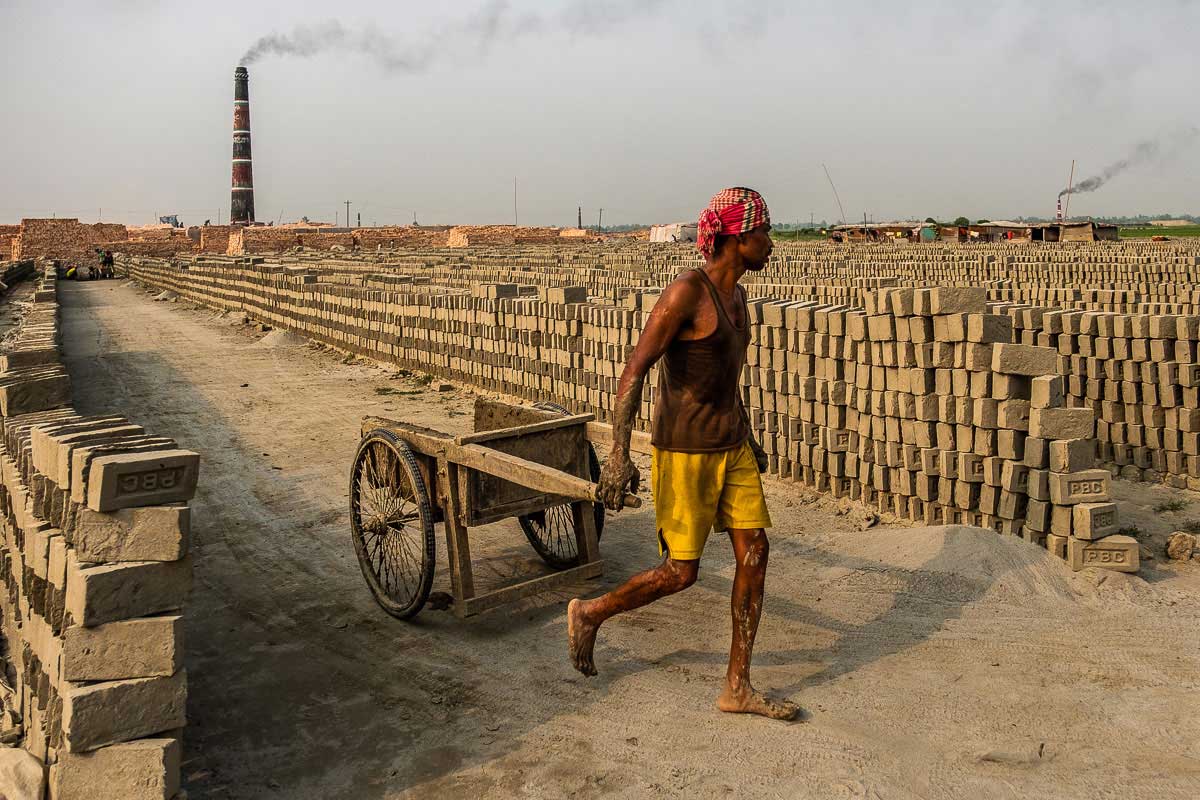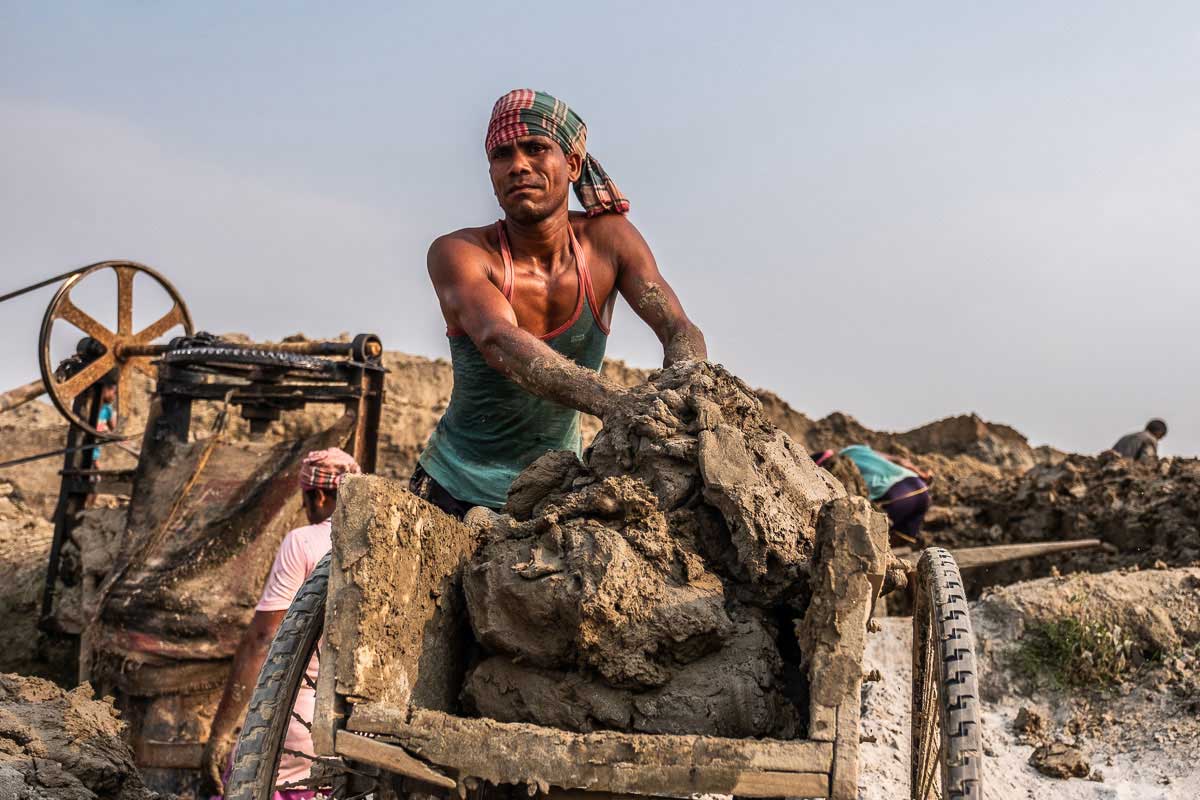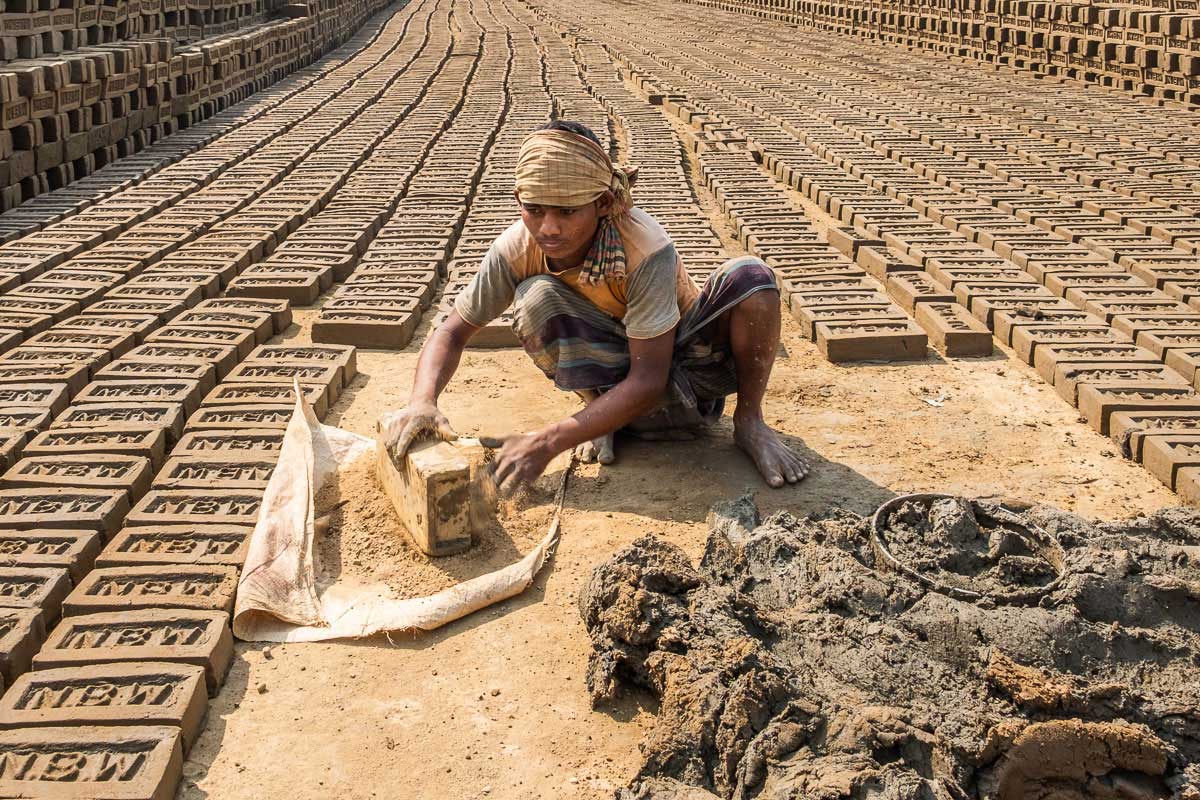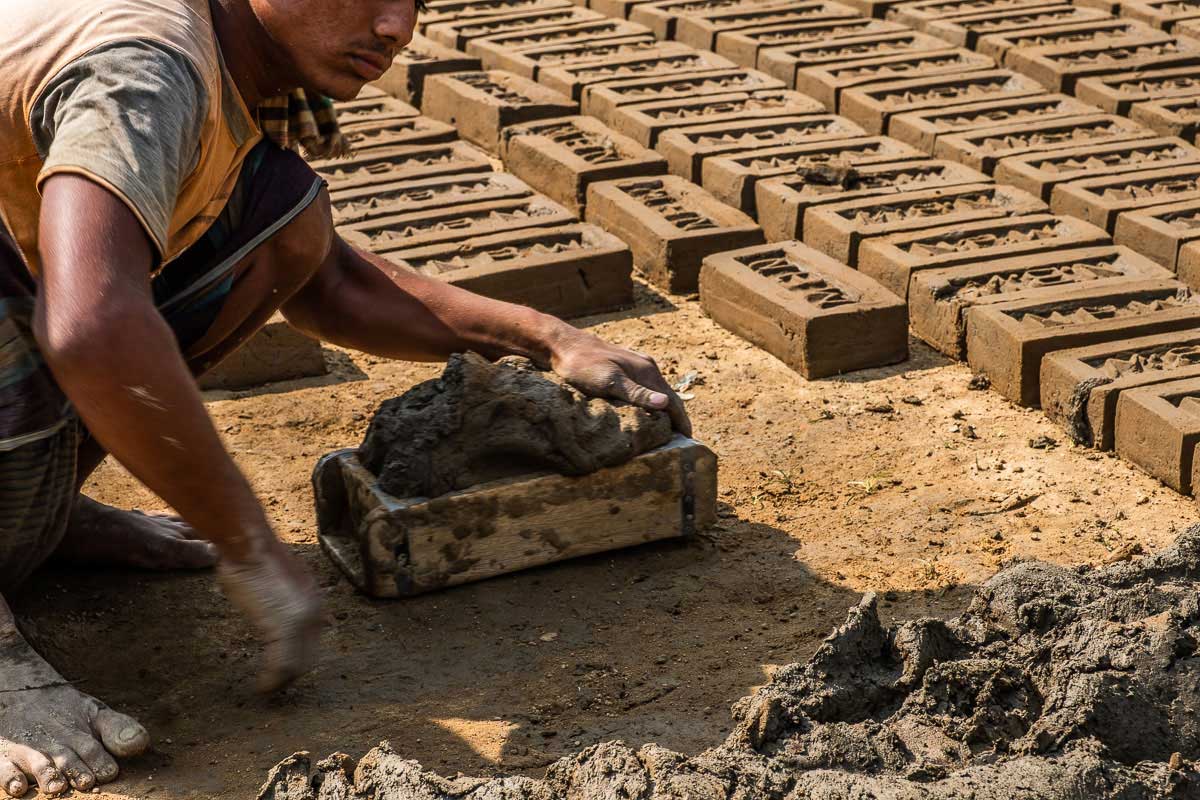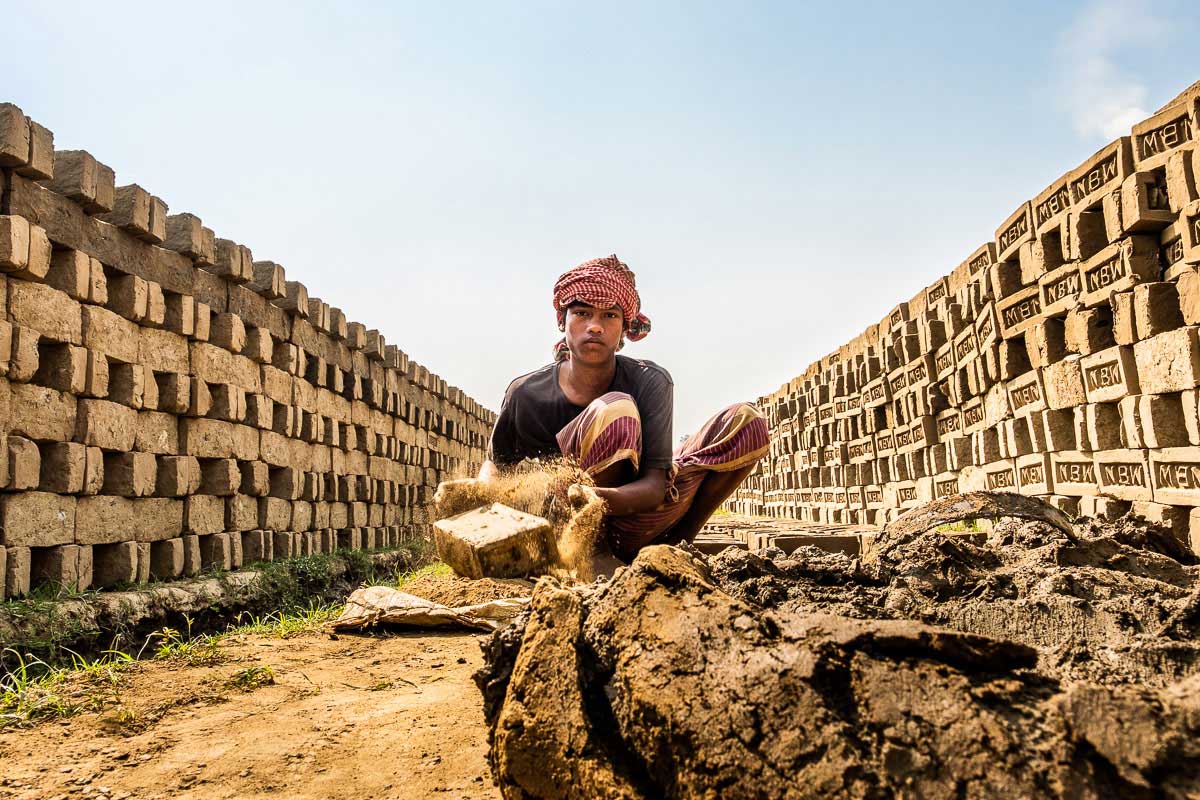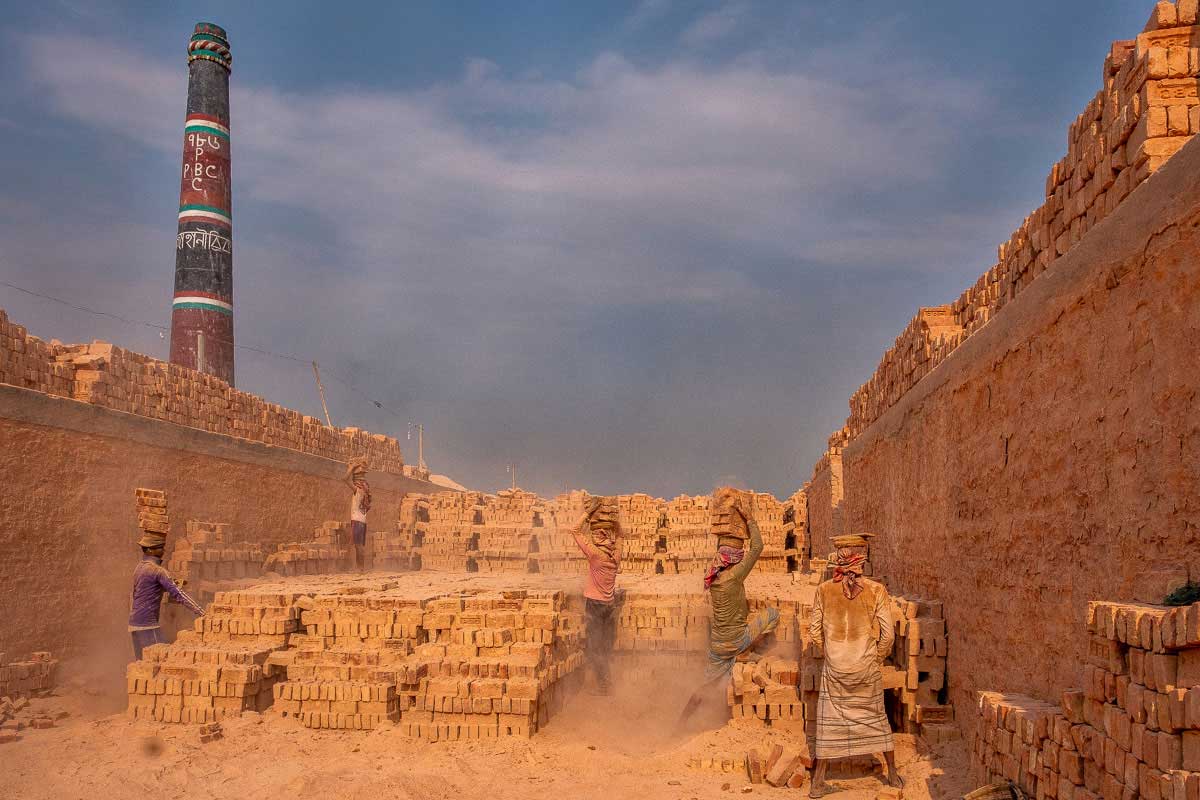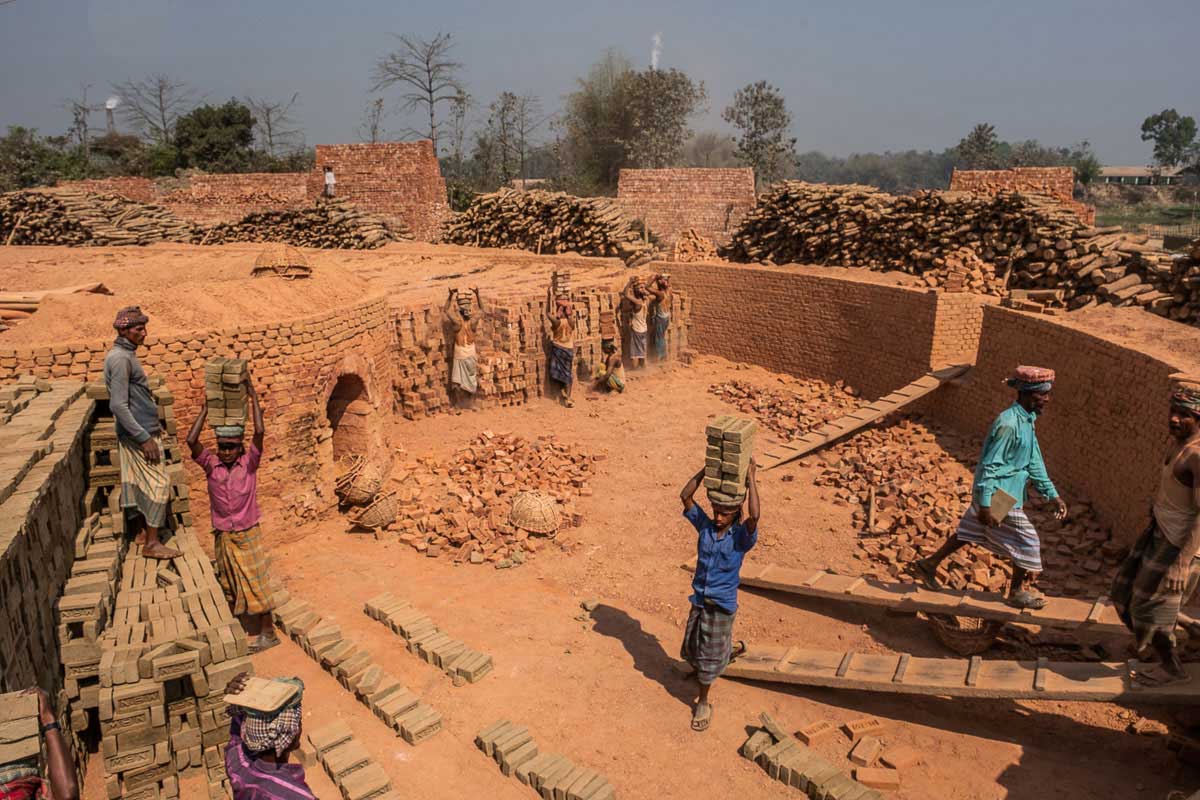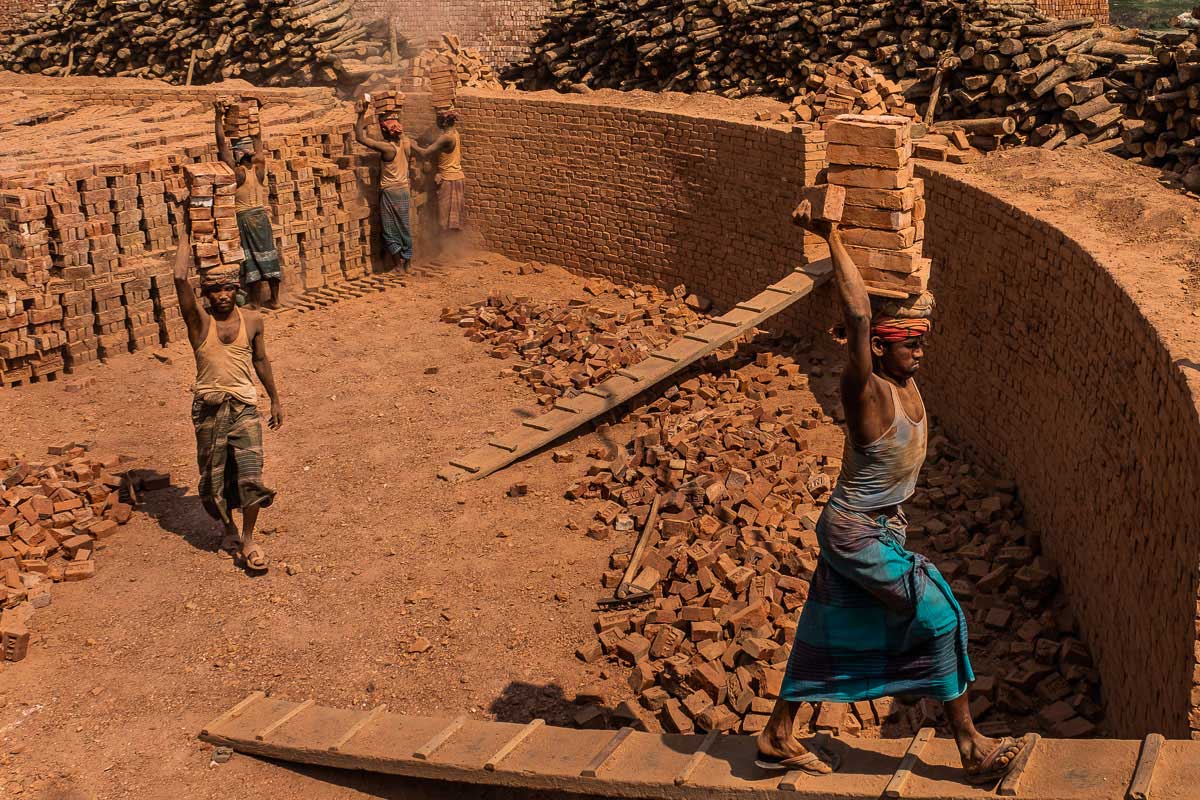With its 163 million-strong population, Bangladesh is in the midst of a construction boom and with that expansion comes a need for cheap construction materials. Such high demand has lead brickmaking to thrive.
However, despite attempt at regulations, the brick-making industry is still a major source of pollution and its workers are subjected to incredibly perilous conditions. Almost all bricks are made by hand, brick by brick, it is a human factory.
One can find clusters of men dealing with different stages of the process. One group is busy extracting mud from which the bricks are made, mixing it with water to keep it workable. The mud is then transported by wheelbarrows to another group of people, the brick makers. This is where the mud is put in wooden molds to give the bricks the desired shape. The brick makers work extremely fast as they are paid per brick made.
The next phase is the baking of the bricks. Here a group of workers brings the raw bricks to the kiln to be baked by balancing as many as sixteen lose bricks in two piles on top of their head. When the baking is done and the bricks have cooled off, another group carries them out the same way. This was mesmerizing to watch. The entire process is done with workers wearing their own clothes, and no special protective gear of any sort. They are constantly breathing an irritating red dust, hours on end. All this done for about $25-30/week depending on the worker’s speed.
The red dust also spreads to nearby towns and villages, potentially creating health problems for all. Legally, no brick factory can be put up within 5km of residential areas. Yet everywhere across the country, bricks are produced close to villages and cities.With the primitive balancing act involved, of course many bricks are damaged, but nothing is wasted here. The broken bricks are smashed into tiny pieces to be converted into sand. As Bangladesh does not produce enough sand which is needed for building materials, roads, and cement, so the damaged bricks are an important source of these materials that will be used all over the country. I guess what was taken from the earth returns to the earth. Watching this process, it is not only bricks that are broken. It is heartbreaking to see people working in such harsh conditions for so little pay. Although the output yields building material for a low monetary cost, there is clearly a high price being paid by the workers, local residents, and the environment.
About France Leclerc
France Leclerc, born in Québec, Canada, is an independent photographer who currently lives in Chicago. Her early career was in academia, but in 2005 she decided to make a change to pursue her true passion for documentary photography. But the curiosity and hunger for learning that had motivated her academic research career did not vanish. France now uses photography as vehicle to understand and help depict issues that puzzle her, and satisfy her passion for learning. Among her most prominent themes are culture, religion and poverty. Her images have now been shown in curated exhibitions and have won numerous awards, including an APA award in the photojournalism category and a PDN WorldinFocus award. [Official Website]
